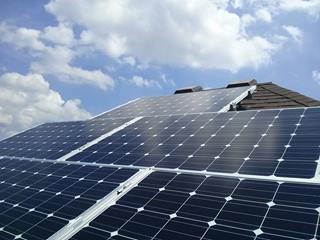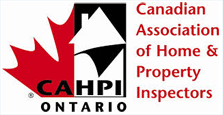My family, like many in Guelph, considers our city to be at the forefront of sustainability and energy efficiency when it comes to residential housing. Canada’s first LEED Platinum home was built in Guelph in 2007 by Reid’s Heritage Homes. LEED, (Leadership in Energy and Environmental Design) is a four level energy efficient building certification program. LEED certified buildings cost less to operate by reducing energy and water bills by up to 40%. The platinum level was the best certification achievable in 2007. Touring the LEED inspired me to make improvements in my old 1960’s home to reduce my energy consumption, starting with replacing light bulbs with LED version which save energy, money and last longer and getting attic insulation up to R50 (about 16”) to reduce heating and cooling energy and cost. These things are great but wouldn’t it be even better if your house could produce energy and since your home energy consumption is reduced now, maybe produce enough to offset your total energy usage? This is the goal a Net Zero Energy home achieves. Guelph builder, Reid’s Heritage Home, has been awarded the opportunity, along with 4 other builders across Canada, to build 25 Net Zero Energy homes under the Eco-Energy Innovation Initiative. The Net Zero home will be built in partnership with Owens Corning and Natural Resources Canada, and on September 29 it was announced the University of Guelph will be joining the project. Many local sustainable building product companies will be joining them in building this energy neutral home. A Net Zero Energy home must fulfil 4 categories to achieve certification as set out by the International Living Future Institute and operated in Canada by the Canada Green Building Council. The energy requirement is the primary focus of the Net Zero home certification. The most interesting thing about the Net Zero home is that ‘100 percent of the building’s energy needs must be supplied by on-site renewable energy on a net annual basis” and “no combustion is allowed”. That means no gas furnace, no electricity from the grid and no ‘green tags’ or ‘green power’ purchases are allowed to offset energy consumption (http://living-future.org/lbc/certification). These may look like daunting requirements to fulfill to the average person but increased consumer demand as a result of incentives in Ontario and around the world has put pressure on manufacturers and researchers to produce higher energy efficiencies for heating, cooling, insulation, and solar photovoltaic (PV) units. Over the last 5 years this demand has helped reduce the price of these new technologies benefiting not just net zero home builders but everyone who needs to replace their heating or cooling system in their existing home. Moving to this new technology...
Does your new house have condensation on the windows?
The most common problem and most complained about problem I’ve seen in my 10+ years of completing new Home Warranty Inspections is condensation on the inside of the windows. You have a brand new house why do your windows have water on them? Is there a defect with the windows? Is there a problem with the installation? Are they just poor quality windows? Why does this only happen in the winter and not when it is raining? Should the builder be fixing this problem? The problem is related to humidity, temperature and ventilation. In nature warm air can hold more moisture vapour than cold air. The water vapour molecules are farther apart in warm air and not visible. Every house contains warm relatively moist air. In the winter, when the warm moist air comes in contact with the excessively cold surface of a window, the warm air drops the moisture on the cold glass surface of the window. The same thing happens when you take a cold drink out of the fridge and set it on the counter, condensation forms on the outside of the cold can. Condensation will only happen when there is a high difference in temperature between inside and outside, and the humidity inside is excessive. What is the maximum temperature difference and maximum humidity? Tarion (Ontario New Home Warranty) Construction Performance Guidelines Appendices has a table showing the suggested maximum inside relative humidity before you see condensation. For example, with double pane glass windows if the inside temperature is 20 degrees C and the outside temperature is -23 degree C then the maximum relative humidity recommended is 27%. But if the outside temperature is -7 degrees C then the maximum relative humidity recommended is 46%. That is a big difference. How do you keep the humidity low enough during cold weather? Follow these three stages: Stage One Turn on the furnace fan to run continuously (ON position instead of AUTO). Open all blinds, curtains, shutters, and move furniture away from floor registers to allow air flow to the window panes. If you have window screens on the inside of the windows remove those as well to encourage air flow past window pane. Run the “ventilation fan” which is the upstairs main bathroom fan (Second switch located by the thermostat). After a few days these three steps will help move air past the windows helping temper the air and remove existing moisture from the windows. The exhaust fan will remove the warm moist air from the house thereby reducing the overall humidity in the house. Stage 2 If the stage 1 steps are not working fast enough to reduce the humidity I would recommend you consider...



